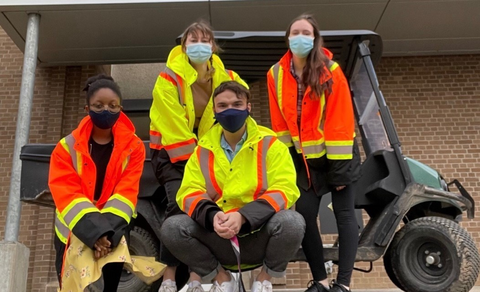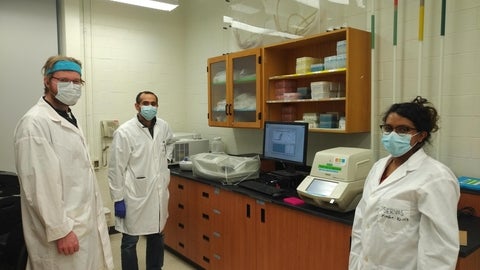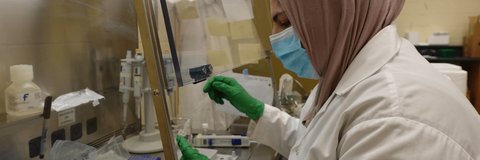Wastewater-based epidemiology (WBE) has rapidly emerged as an effective method to conduct independent surveillance of the occurrence of COVID-19 in communities (see Ontario Science Table and Dashboard). The signal of SARS-CoV-2 in wastewater, measured using quantitative polymerase chain reactions (qPCR), can be strongly correlated to the reported positive tests or hospitalizations in the corresponding population (sewershed). This can be an additional tool to monitor trends in communities and inform public health actions that are not influenced by the same biases in human health testing (e.g. non-symptomatic cases, etc.).
Early in the pandemic we realized that our experience with wastewater and molecular biology studies with fish could be applied to measuring SARS-CoV-2 in wastewater. We returned to the lab and started to develop methods that could be applied to measure SARS-CoV-2 viral fragments in wastewater. Inially we were limited to the supplies and instruments in the lab, but over time we have established a state-of-the-art lab conducting wastewater surveillance at many sites in Ontario (supported by Global Water Futures, NSERC, CFI, MECP and University of Waterloo). Listen to the Podcast (Beyond the Bulletin) where Mark Servos discusses wastewater surviellance for COVID-19.
Our team has been actively engaged in the development of WBE in Canada since the beginning of the COVID-19 pandemic and has shared methods and data openly with the scientific community. We have worked closely with partners in municipalities and Public Health Units to develop and apply the approach in real time during the pandemic. We were also fortunate to have exceptional collaborators across Canada, especially at the University of Ottawa and Windsor. We have supported the Provincial effort (i.e., MECP) to establish a network of labs to apply the approach widely. This has been a remarkably collaborative effort focused on providing an additional tool to inform public health responses.
Our lab continues to refine, develop and validate methods for application to various wastewater matrices; assess trends in SARS-CoV-2 detection in several representative communities; test alternate sample strategies and endpoints; and examine how environmental variables impact viral fragment detection in sewer systems and influence model predictions and interpretation. Working with other labs we have contributed to the development and application of rapid methods (qPCR) for the detection and quantification of Variants of Concern in wastewater. Watch the video below to see how the analysis is done.
We are currently working closely with the Regional Municipalities of Peel, York and Waterloo to analyze wastewater for SARS-CoV-2 and sharing our result publicly:
In addition, our team has been supporting the University of Waterloo by monitoring for SARS-Cov-2 in residences using wastewater (see dashboard).

The following video was created by the members of the lab to explain the basic methods we use.
Some photos of the process to collect, extract, concentrate and detect SARS-CoV-2 in wastewater.
Sample collection


Sample prep


Preparing samples


Preparing PCR plates


Conducting RT-qPCR; the team running qPCR in May 2020


